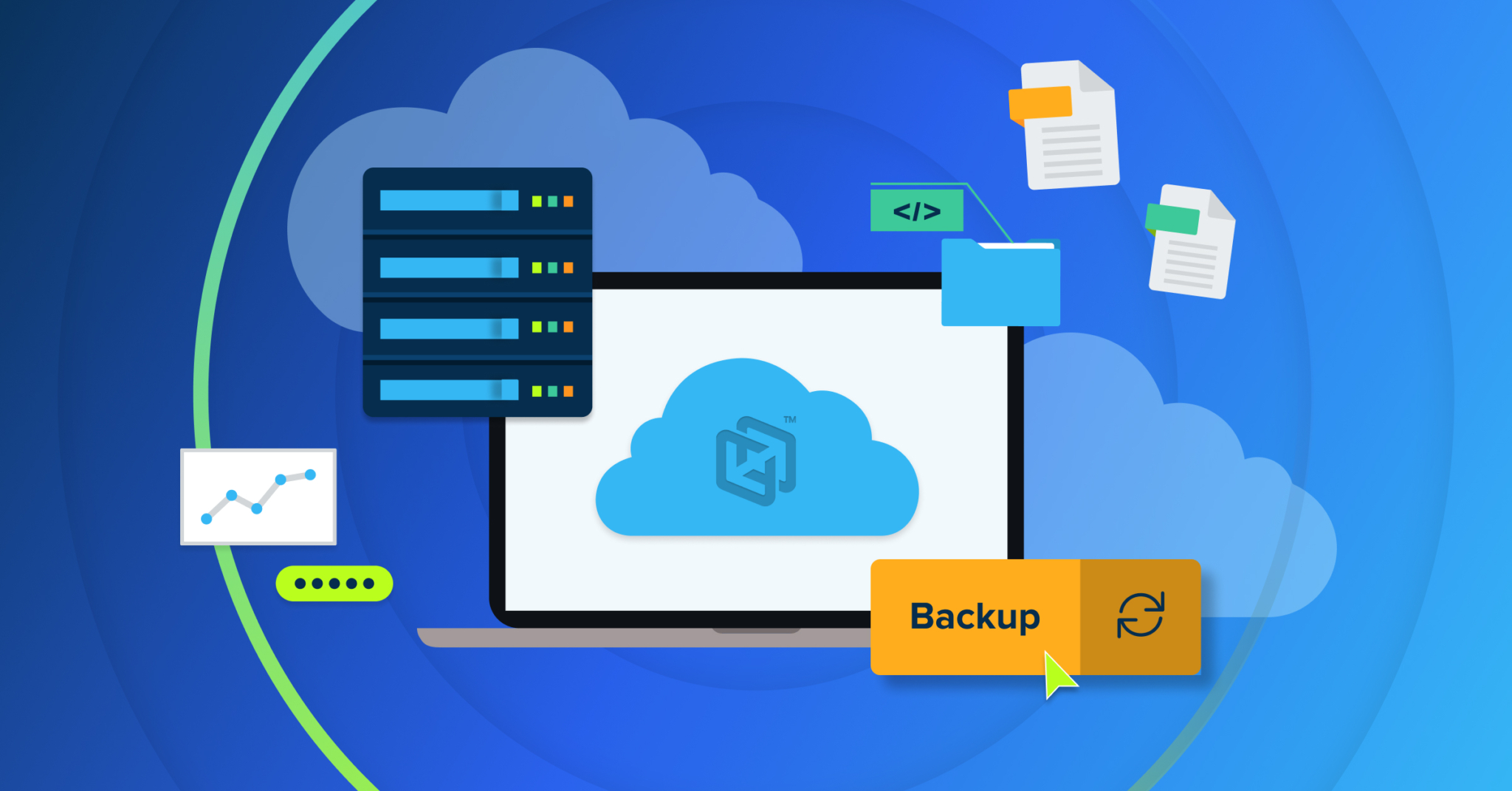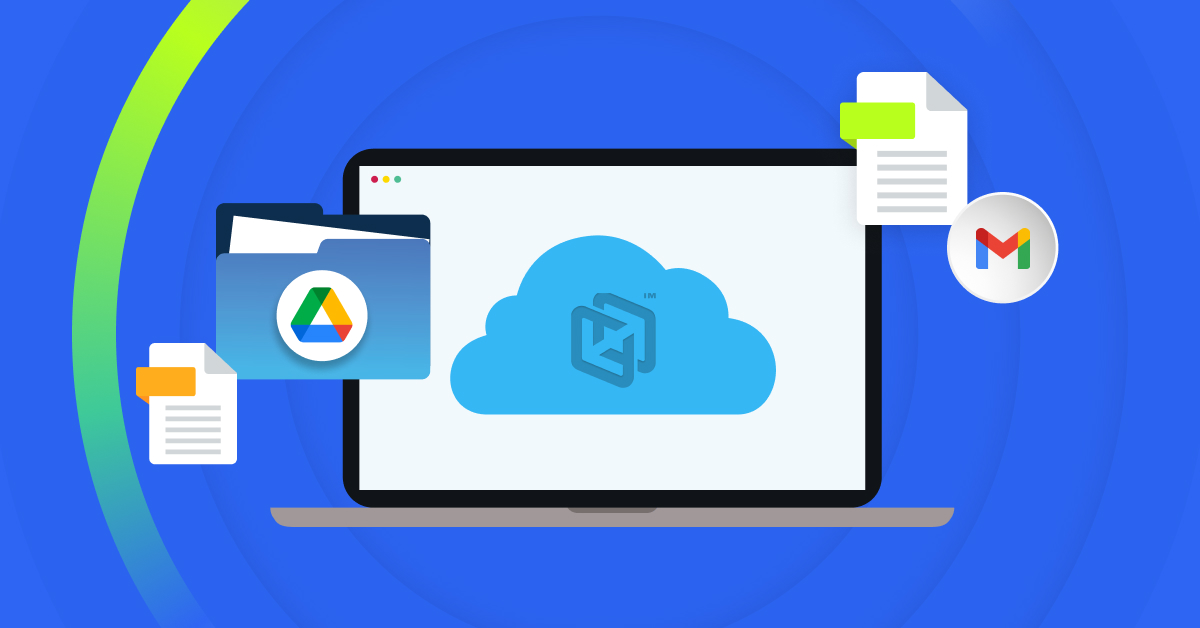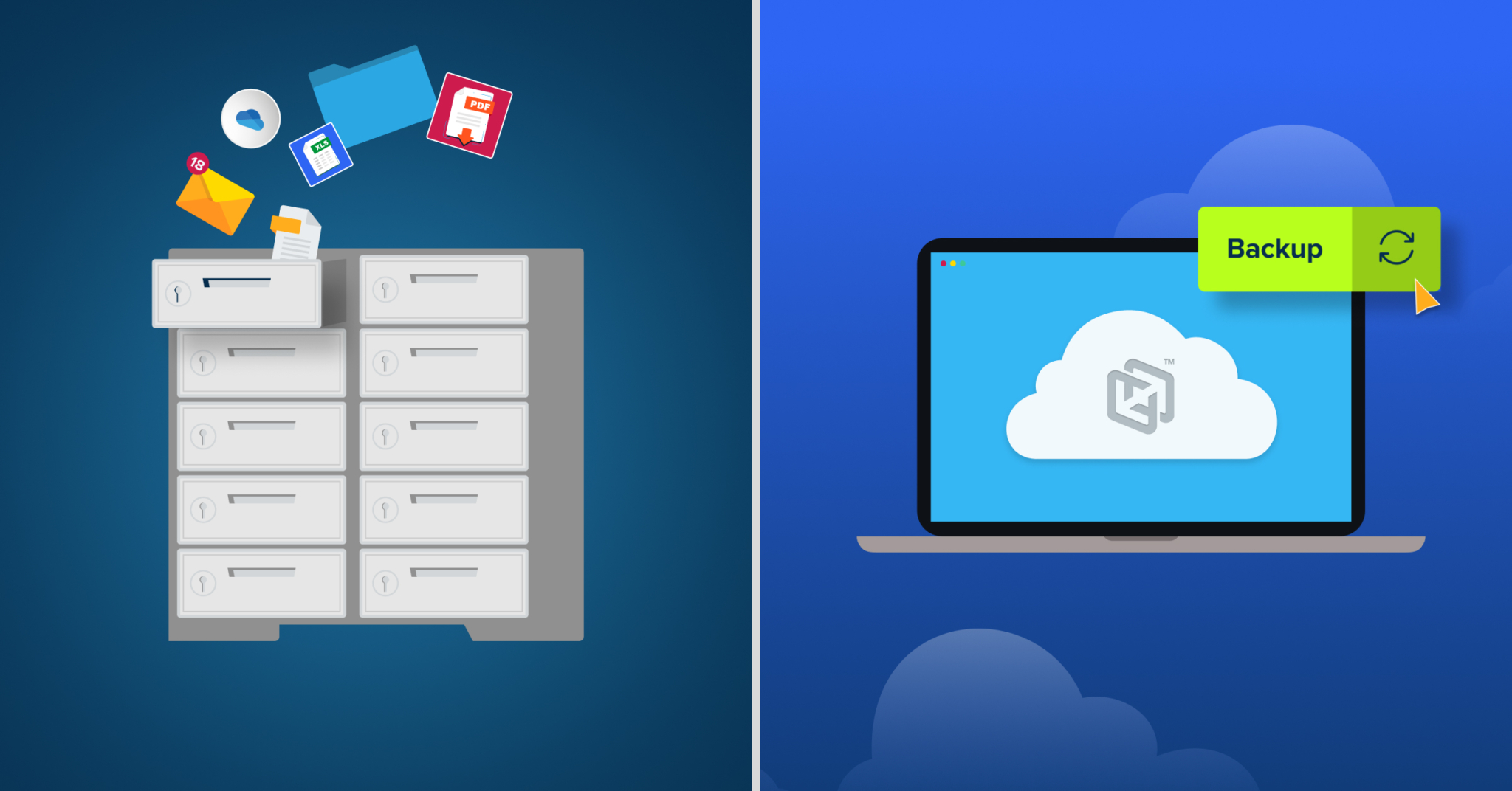
Let’s say a well-known financial institution is experiencing a system-wide outage from ransomware attacks. Customer transactions freeze, account data is locked, and within hours, the company faces losses in millions, both in revenue and reputation.
Unfortunately, this isn’t a hypothetical scenario. Cyberattacks have surged by 38% in Q3 of 2024, with organizations facing an average of 1,300 attacks per week.
For CIOs and CISOs, data resilience is more than an IT concern. It’s a business survival strategy. It goes beyond traditional backup and recovery. It’s about ensuring that no matter what happens, including cyberattacks, human errors, system failures, or natural disasters, your organization’s critical data remains accessible, secure, and intact.
Read on to learn what data resilience means, why traditional methods are no longer enough, and how businesses can prepare for the evolving threats of 2025.
What data resilience means in 2025
There was a time when data resilience was just about having a backup plan. But now things have changed. It’s more now about ensuring that disruptions never cripple your business in the first place. In 2025, organizations can no longer afford to view backup and recovery as check-box IT functions. A resilient organization must anticipate threats, protect critical assets, minimize downtime, and have the capability to recover instantly and at scale across the organization, and traditional backup models do not support this for modern organizations.
Traditional backup strategies assume that data can simply be restored from a saved copy if something goes wrong. But with modern cyber threats like ransomware targeting backup repositories and insider attacks compromising data integrity, businesses must take a more proactive approach. Real resilience means that systems can self-heal, detect anomalies, and respond automatically before disruptions escalate. It requires continuous data availability, assured immutability, automated replication, and real-time risk monitoring.
The impact of weak data resilience extends beyond IT, it will affect every part of the business when things go wrong. A single outage can cost millions in lost revenue. A data breach can damage brand reputation beyond repair. Non-compliance with data protection laws can lead to heavy fines. The responsibility for resilience doesn’t lie solely with IT teams. It’s a boardroom priority that affects customer trust, financial stability, and competitive advantage.
CIOs and CISOs must rethink their strategies, shifting from a reactive mindset to a proactive mindset when it comes to data resilience. Positioning their organizations for success when faced with a disruption, attack or outage and being able to recover quickly and continue operations as though the disruption never happened.
The biggest threats to data resilience in 2025
In 2024, the average cost of a data breach reached an all-time high of $4.88 million, marking a 10% increase from the previous year. This alarming statistic underscores the escalating threats to data resilience that organizations face as we move through 2025 and beyond. Let’s delve into these pressing challenges:
The Rise of Sophisticated Ransomware and Cyber Extortion Tactics
Ransomware attacks have evolved dramatically. In 2024, the average ransom demand surged to $2.73 million, reflecting a significant increase from previous years. Ransomware groups and cybercriminals will use double extortion techniques to encrypt data and also exfiltrate it while threatening public release on a deadline, amplifying pressure on organizations to comply with their demands. Notably, the healthcare sector witnessed unprecedented breaches, with 13 incidents each compromising over a million records, including one affecting approximately 100 million individuals. These examples highlight the critical need for modern robust data resilience strategies to counteract sophisticated ransomware and cyber attacks.
Cloud vulnerabilities and data exposure risks
As organizations increasingly migrate to cloud infrastructures, they encounter new security challenges. Misconfigurations, insecure APIs, and inadequate access controls have led to significant data exposures. The shared responsibility model of cloud security means that while providers secure the infrastructure, organizations must diligently protect their data within these environments. Failure to do so can result in unauthorized access and substantial data breaches, emphasizing the importance of comprehensive cloud security measures.
The challenge of insider threats and human error
Not all threats originate externally. Insider threats, whether malicious or due to negligence, pose significant risks to data integrity. Employees with excessive access privileges or inadequate training can inadvertently expose sensitive information or fall victim to social engineering attacks. For instance, in 2024, a sophisticated phishing campaign utilizing deepfake technology led to a $25 million loss, illustrating the severe consequences of human error and highlighting the importance of continuous employee education, security awareness and robust access controls.
Compliance and regulatory changes that demand resilience
The regulatory landscape is continually evolving, with stringent data protection laws such as the General Data Protection Regulation (GDPR) and the California Consumer Privacy Act (CCPA) imposing rigorous requirements on organizations. Non-compliance can result in substantial fines and significant reputational damage. Furthermore, emerging regulations are increasingly focusing on organizations’ ability to demonstrate data resilience, making it imperative for businesses to implement robust cybersecurity frameworks.
Why traditional backup and recovery isn’t enough anymore
Backup and recovery capabilities have long been the foundation of data protection strategies, but as organizations scale and become more complex, so do the risks. Relying on legacy backup solutions is like using a paper map in an era of GPS navigation—they may have worked in the past, but they are no longer equipped to handle the complexity of today’s digital infrastructure.
The limitations of legacy backup solutions
Traditional backup solutions follow a static approach, where data is copied at scheduled intervals—daily, weekly, or monthly. This worked well when businesses handled predictable data volumes, but today, the amount of data being generated and processed is exponentially higher. A backup created last night could already be outdated by morning, making data recovery slow, fragmented, or even incomplete.
Another major flaw is the dependency on manual intervention. Many businesses still rely on IT teams to manage, verify, and restore data. It is a process that is time-consuming and prone to errors. Worse, in the event of a cyberattack, ransomware is now capable of targeting backup files, encrypting them before organizations even realize an attack has occurred.
Additionally, recovery from legacy backups is slow. Downtime can cost businesses anywhere from $140,000 to $540,000 per hour. In today’s world, businesses need instant access to their data, not hours or days of waiting for a restoration process to complete.
The need for automation, AI-driven anomaly detection, and rapid recovery
The solution to cyber threats isn’t just better backups. It’s an entirely new approach to resilience. Modern organizations are shifting to AI-powered backup strategies that detect anomalies in real time, automate recovery, and minimize data loss.
AI-driven backup systems continuously scan for unusual data changes, helping organizations detect potential ransomware encryption attempts before files are locked. Instead of storing static copies, businesses are implementing immutable backups that cannot be altered or deleted by unauthorized users.
Furthermore, instant recovery solutions allow businesses to spin up clean environments within minutes instead of spending hours or days restoring operations. This ensures that operations continue with minimal disruption even in the event of a cyberattack, system failure, or accidental data deletion.
How modern businesses are rethinking their backup strategies
Businesses that have learned the hard way are already abandoning legacy backup models and moving toward resilient, self-healing infrastructures.
Many organizations are adopting zero-trust architecture for backup strategies, ensuring that only authenticated processes and users can access critical backup data. Others are employing air-gapped or multi-cloud backups, storing data copies in distinct environments that remain impervious to ransomware or internal sabotage.
Ultimately, the goal of backup is no longer just restoration but rather, organizational continuity and data resilience. Modern businesses are architecting always-available systems where data loss, downtime, and cyber threats do not disrupt business operations.
The role of zero trust in strengthening data resilience
Cyber threats have become more sophisticated, and the increasing adoption of cloud services and remote work has dissolved clear network boundaries. This shift necessitates a more robust security framework, leading to the adoption of the Zero Trust model.
Why zero trust extends beyond network security to data protection
The zero trust model operates on the principle of “never trust, always verify,” meaning that no user or device, whether inside or outside the organization’s network, is trusted by default. This approach is important for network and data security. By implementing zero trust, organizations can ensure that access to sensitive data is granted based on strict verification processes, thereby reducing the risk of data breaches.
Implementing least privilege access and micro-segmentation for data security
Two fundamental components of zero trust architecture are least privilege access and micro-segmentation.
Least privilege access:
This principle dictates that users and applications are granted the minimum levels of access necessary to perform their functions. By limiting access rights, organizations can minimize potential attack vectors, ensuring that even if credentials are compromised, the damage is contained.
Micro-segmentation:
This strategy involves dividing the network into smaller, isolated segments or “microsegments.” Each segment acts as its own security zone, restricting lateral movement within the network. Organizations can contain breaches and prevent attackers from accessing critical systems by enforcing granular access controls between these segments.
By integrating least privilege access and micro-segmentation, organizations create a layered security approach that significantly enhances data protection.
A guide for CIOs and CISOs to align zero trust
For Chief Information Officers (CIOs) and Chief Information Security Officers (CISOs), aligning zero trust principles with business security plans is essential. This alignment ensures that security measures support the organization’s ability to operate under adverse conditions.
Unified security strategy:
Zero trust offers a complete framework that works with many security ideas, such as micro-segmentation and least privilege access. By adopting zero trust, CIOs and CISOs can create a cohesive security strategy that enhances the organization’s overall security posture.
Enhanced compliance and risk management:
Implementing zero trust can simplify compliance efforts and improve risk management. By enforcing strict access controls and continuous verification, organizations can better meet regulatory requirements and reduce the likelihood of security incidents.
Resilient operations:
Zero trust’s emphasis on continuous verification and minimal access reduces the impact of potential breaches. This resilience is key to maintaining business continuity.
What leaders must know about compliance, privacy, and data resilience
Governments worldwide are tightening data regulations, forcing businesses to protect data and also prove that they can recover it quickly after an incident. The consequences of non-compliance are no longer just fines; businesses now risk losing their operating licenses, customer trust, and market position.
How compliance impacts data resilience
Many organizations see compliance as a checkbox exercise, like just another regulation to follow. However, the connection between compliance and data resilience is profound. Laws like GDPR, CCPA, and NIS2 mandate data protection; they also require businesses to prove they have mechanisms in place to recover from breaches, outages, and cyberattacks.
For instance, GDPR’s Article 32 specifically states that businesses must ensure the “availability and resilience of processing systems” in case of a disruption. That means having backups alone isn’t enough. Organizations must show that:
- They can restore lost data quickly without delays that impact customers.
- They have real-time threat monitoring to detect breaches before they escalate.
- They follow strict access controls to prevent insider misuse of sensitive data.
Similarly, NIS2, which applies to critical sectors like finance, healthcare, and cloud providers, requires businesses to demonstrate operational continuity even under attack. If a ransomware attack takes down a hospital’s data, and patient records aren’t accessible, that hospital could face legal consequences—not just financial losses.
Data resilience is a foundational element of defense-in-depth approach to protecting your organization, it is also a requirement of compliance frameworks. Organizations that treat data resilience as table stakes in their security strategy and not just a compliance check box will be better prepared to continue operations when impacted by a cyber threat.
The hidden risks of non-compliance
It’s not just about penalties.
A single compliance failure can have ripple effects that go far beyond regulatory fines. In recent years, companies that failed to follow data privacy laws have faced:
- Severe reputational damage: Customers don’t trust businesses that mishandle their data.
- Loss of business partnerships: Many companies require proof of compliance before signing vendor contracts.
- Increased cyber risk: Regulators often audit businesses after a breach, exposing security flaws that attract more cybercriminals.
Take the example of British Airways, which was fined £20 million ($25 million) under GDPR for failing to protect customer data. The breach itself was bad, but the bigger consequence was the erosion of customer trust. People hesitated to book flights, worried that their payment data could be compromised again.
Similarly, when Meta (Facebook) was fined $1.3 billion for data privacy violations. It wasn’t just the financial hit that hurt them, but it was the massive scrutiny and regulatory hurdles that followed, restricting their ability to operate freely in certain markets.
For CIOs and CISOs, compliance should be considered a long-term investment in resilience rather than just a legal requirement.
Building an audit-ready, resilient data framework
If regulators came knocking today, could your business prove it has a robust and resilient data strategy? Do you have the right processes, tools and resources in place and have you validated their efficacy?
Here’s how CIOs and CISOs can ensure their organizations are compliant and truly resilient:
- Automate compliance monitoring: Manual compliance tracking is outdated. Businesses must use AI-driven tools to monitor security policies in real time, ensuring continuous compliance.
- Enforce zero trust security: Regulations are moving towards identity-first security models. Implementing zero trust ensures only authorized users access sensitive data, reducing the risk of insider threats.
- Implement immutable backups: Regulators now expect businesses to prove that data cannot be altered or deleted by cybercriminals. Immutable backups ensure recovery even if primary systems are compromised.
- Regularly test recovery plans: A data resilience plan isn’t effective if it’s never tested. Businesses must conduct routine disaster recovery tests to identify gaps and opportunities for improvement before a real crisis happens.
- Enhance incident response capabilities: Being compliant means having a clear, documented plan for responding to breaches. The plan includes notification timelines, forensic analysis, and regulatory reporting.
CIOs and CISOs need to establish a culture that integrates compliance and resilience. Instead of treating regulations as obstacles, the focus should be on using them as guidelines to strengthen cybersecurity.
The ROI of modern data resilience solutions
Investing in modern data resilience solutions is a strategic move that can yield substantial returns for organizations. Here’s a detailed cost-benefit analysis to understand the Return on Investment (ROI) of implementing these advanced systems.
Understanding the costs
- Initial Investment: Implementing modern data resilience solutions involves costs such as purchasing advanced software, upgrading hardware, and integrating new technologies into existing systems.
- Operational Expenses: Beyond the initial setup, organizations must consider ongoing costs, including maintenance, updates, and training staff to effectively use new systems.
Quantifiable benefits
- Cost Savings: Modernizing IT infrastructure can lead to substantial cost reductions. Businesses can save up to 50% in maintenance costs by replacing outdated systems with more efficient technologies. Additionally, enhanced system reliability can reduce downtime, leading to further financial benefits.
- Performance Improvements: Upgraded systems typically offer better performance, with studies showing improvements in system speed by up to 80% and ensuring 99.9% uptime.
- Enhanced Security: Modern data resilience solutions often come with advanced security features, enabling organizations to respond to threats 92% faster.
- Revenue Growth: Improved data management and system reliability can lead to increased revenue. Organizations have reported revenue boosts of up to 14% following IT modernization efforts.
Calculating ROI
To calculate the ROI of modern data resilience solutions, organizations should:
- Total benefits: Sum all quantifiable benefits, including cost savings, increased revenue, and productivity gains.
- Total costs: Combine initial investments with ongoing operational expenses.
- ROI formula: Use the formula:
ROI=(Total Benefits-Total Costs/Total Costs)×100%
For instance, if an organization invests $1 million in data resilience solutions and realizes $3 million in benefits over three years, the ROI would be:
ROI=($3million-$1million/$1million)×100%=200%
CrashPlan: Helping organizations develop data resilience
Downtime is a business killer. Cyber threats are evolving faster, regulations are tighter, and customers expect reliability. The companies that succeed won’t be the ones avoiding disruptions but the ones recovering so quickly that it barely matters.
Data resilience is the foundation of business survival. To learn more about data resilience today, watch our webinar, Rethinking Data Resiliency with CrashPlan and Forrester. And learn how CrashPlan’s backup solutions can help protect your essential data today.





